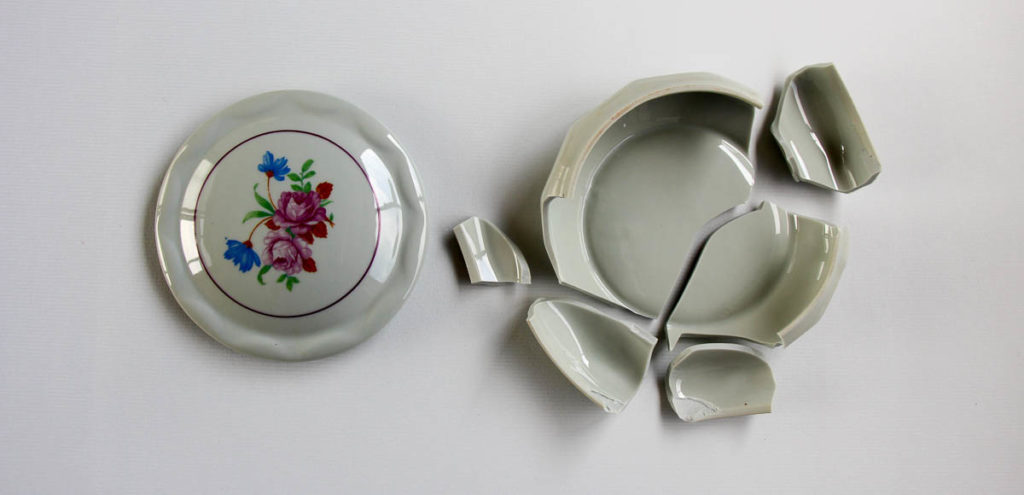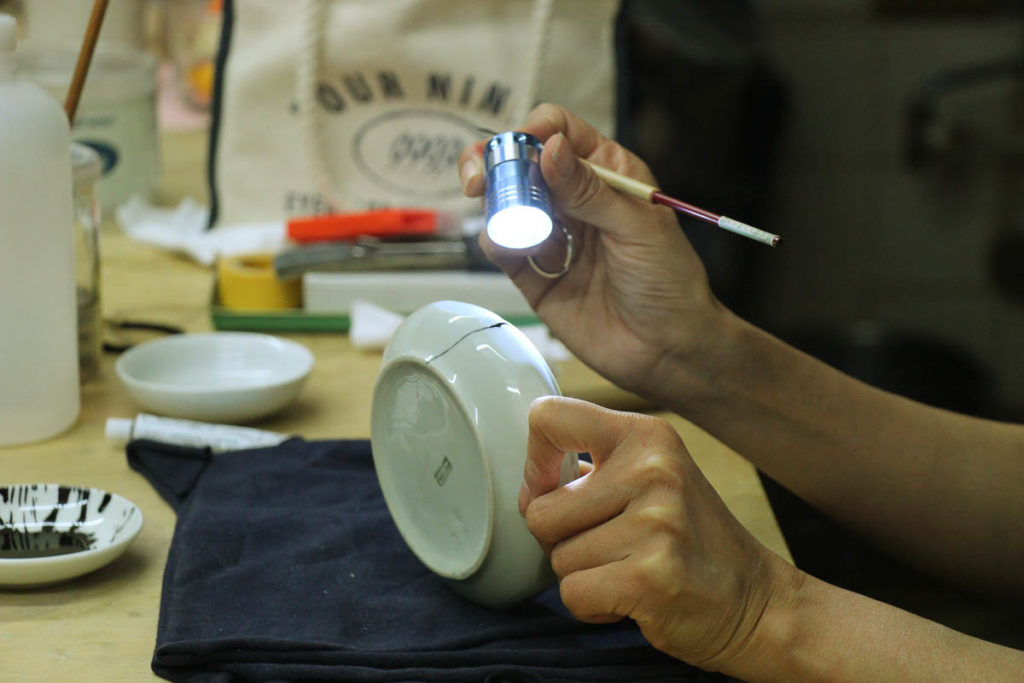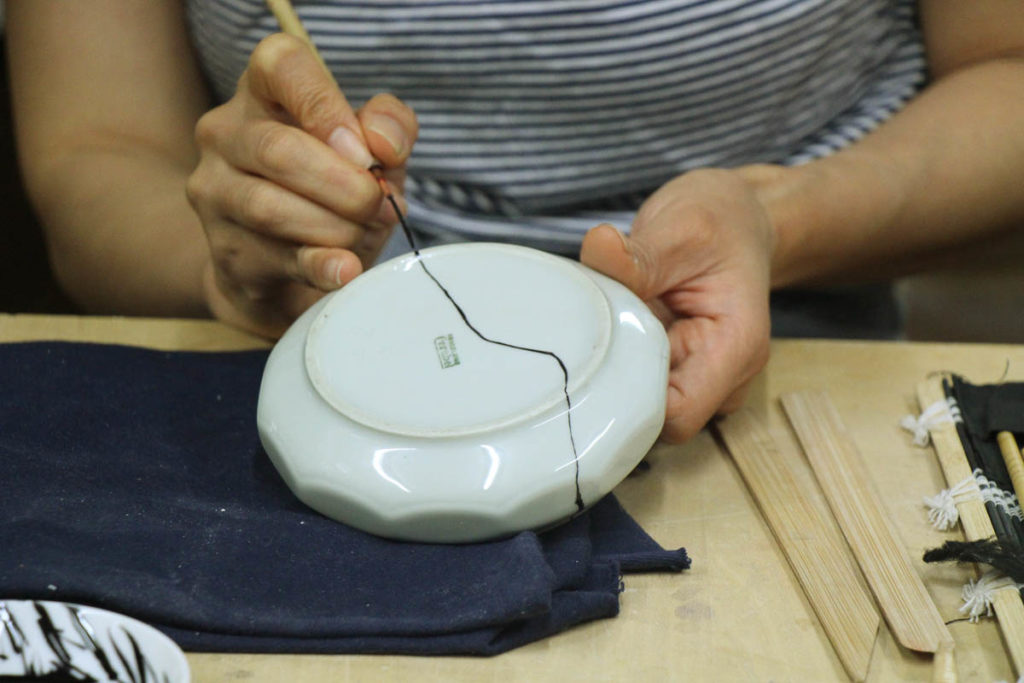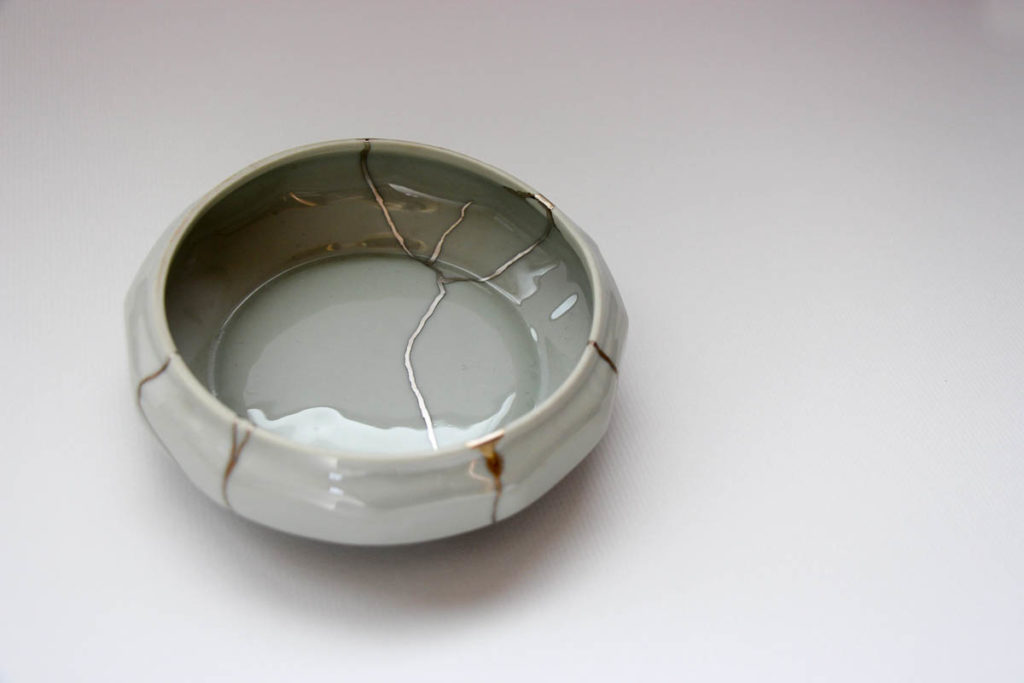For as long as things have been made, things have broken. And likely for nearly as long, things have been fixed. Yet there can be unexpected beauty and creativity in repairing something. Indeed, for some artisans, there’s a unique philosophical and spiritual dimension to making something whole again.
In Japanese craftmaking, the art of repairing broken ceramics is called kintsugi. The original cracked or broken piece—perhaps a shattered plate, bowl or teacup—is reconstituted and bonded back together using a lacquer often coloured with gold or silver powder. The result is a new version of the original, this one highlighted by imperfections. The coloured cracks are evidence of repair and construction, like historical markers of what the piece has been through.
Some artisans and observers take a romantic view of kintsugi. The cracked ceramic seems to embody its past, its mistakes, its rebirth. They compare kintsugi to life—being broken, surviving, showing scars.
Kyoto-based ceramicist Keiko Ikoma, 46, has worked in kintsugi for 10 years, and she has learned to see it somewhat differently. “I had heard the word, but not many ceramicists can do it. I couldn’t either,” she tells Living Form, “so I started at a cultural school, which was really the start for me.”
Ikoma’s Kyoto studio, where she has now been for 21 years, doubles as a classroom-based around a large kiln. Before Ikoma made it her home, the space was a temporary hairdressing studio, and before that a textile factory and living quarters for labourers who made obi belts for the royal class. After a downturn in the economy, the area was reinvigorated thanks to help from a monk named Mr Mitsuteru Sano, a sort of caretaker for the area. Mr Sano wrote letters of recommendation for prospective tenants like Ikoma who wanted to move in and bring new life to the neighbourhood. “Now it’s glass and sliding doors, but originally, when I first came here, everything was just paper. So fragile and not sturdy,” Keiko says. “My mother was worried.”
Funnily enough, Ikoma credits her mother for starting her down the path toward a career in ceramics. “My mother played an instrument and sang since she was 15 years old. Of course she became an ordinary housewife, but her understanding of art influenced me,” Ikoma says. “As a child, I was able to do drawings and learn piano. But I especially loved to draw.” Ikoma still paints, and some of her ceramics are covered in ink drawings.
“During high school, I continued to draw and learn piano. Then, for university, I was aiming to be an artist, a painter, but during summer school, my high school had a ceramic kiln, and by chance there was a pottery teacher, and I took a lesson. It was the first time I worked three-dimensionally, as opposed to two, like with painting,” she says. The added dimension proved to be a lifelong source of inspiration.
“Using clay was very fun because, in a way, it’s difficult. You would leave it a day to dry, but the next day it might collapse, maybe because of too much moisture. The difficulty was part of the enjoyment,” she says. “I immediately switched and said I want to continue, even if I didn’t know too much about pottery.”
In high school exhibitions, Ikoma had previously exhibited large oil paintings, but that year, she displayed a large vase covered with the drawing of a flower, for which she won a prize. As a high schooler, she was of course pleased with the award. It made her push forward. “Reflecting back, that was the beginning of what I am still pursuing.”
Today, in front of Ikoma’s studio sits a large vessel that was originally a school assignment. The large piece was recently borrowed by a local tea master who asked to use it in a tea ceremony. In fact, the vessel is so large that, due to the restrictive size of the kiln, it had to be constructed from eight separate pieces. To connect the eight pieces, Ikoma used the kintsugi method, but not in the showy style that has helped popularize the technique. “There will be artists exposing it purposefully,” she said of kintsugi. “They will purposely break a mug, then repair it so the gold stands out. But for me, I don’t want to use kintsugi in that aspect.”
Even for ceramic repairs, Ikoma says she sees kintsugi differently, perhaps less romantically, since she approaches the object as an artisan in conversation with the original creator. “Because I am from a ceramic background, I can understand how it was made, which is a very different perspective from touching a utensil as a utensil for food or whatnot from the user’s side,” she says. “I’m not interested in the outcome or the finished product, but the process of putting together broken pieces. By feeling the broken pieces, I can understand how the original artisan created it—this curve, or in what environment.”
Working with no reference can be freeing, she says, but also edifying. “Once, I was fixing a vase that still had the body but the top was missing. I had to replicate the top from imagination. I observed the piece, day after day, trying to fit different tops until it synced in. That process, for me, is part of a meaningful learning process.”
Along with repairs, Keiko still takes pleasure in making large ceramics, even if they don’t sell as well. To earn a living, she also makes smaller, more usable pieces. “It’s a balance,” she says. “To live as a ceramicist, you need objects that make a profit, that keep you going. But also, at the same time, I make pieces for my own enjoyment.” These days she often has 20 students in her studio, and teaching is her main source of income. Ikoma often instructs her students to make large pieces because, as with her own work, the process gives them energy and adds a certain liveliness to the work. And she makes sure kintsugi is crucial to their education.
“I think there is importance in knowing the word, hearing it, even if it’s in the back of your mind. That’s why I teach it to my students. Maybe the students will continue with it or not, but still it will be in the back of their minds as a method of expression,” she says. “Two pieces I’m fixing, even if they look similar, I cannot fix them in identical ways, so each individual piece is different. It’s never-ending, a never-repeating process.”
Glossary
1. maki-e: a type of artwork (literally “sprinkled picture”) onto which a design is made by sprinkling or spraying wet lacquer made with metallic powder, often gold or silver
2. urushi: a natural lacquer derived from tree sap, traditionally combined with gold powder for use in maki-e ceramics
3. kebo: a hair-tipped brush used to apply lacquer sprinkled with metallic powder
Author
Ryan Leahey wrote this for Living Form, which is located in Kanazawa and is affiliated with the Cooperative Association for Promotion of Kanazawa Kaga Maki-e and The Art of Travel, an art-focused luxury travel service. It aims to increase the awareness and relevance of Asian craft, particularly work from Japan. Its goal is to connect future collectors to objects, artists, and experiences that will ignite a lifelong passion for contemporary Asian craft. Living Form nurtures strong and sustainable relationships between Eastern makers and a Western audience.













